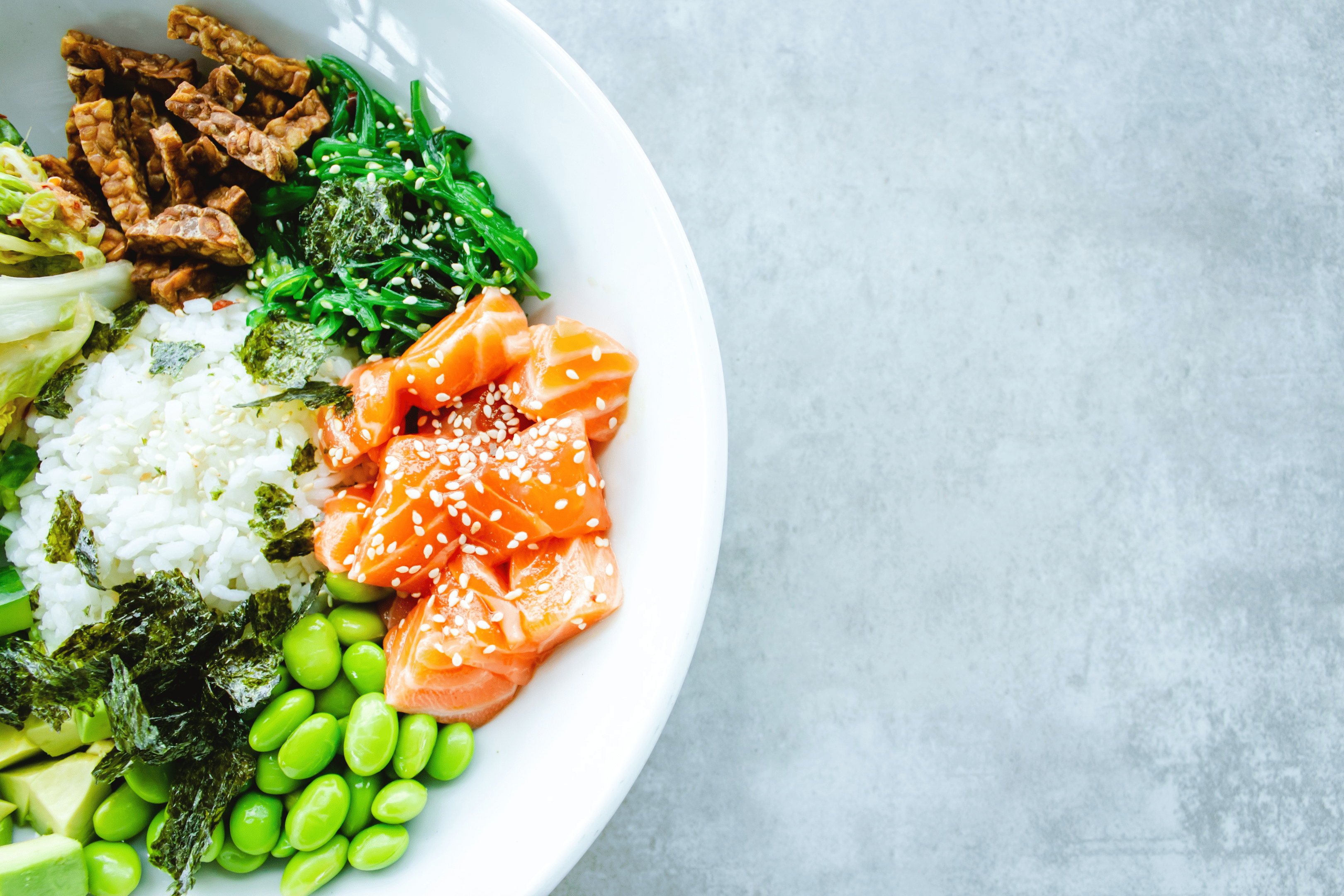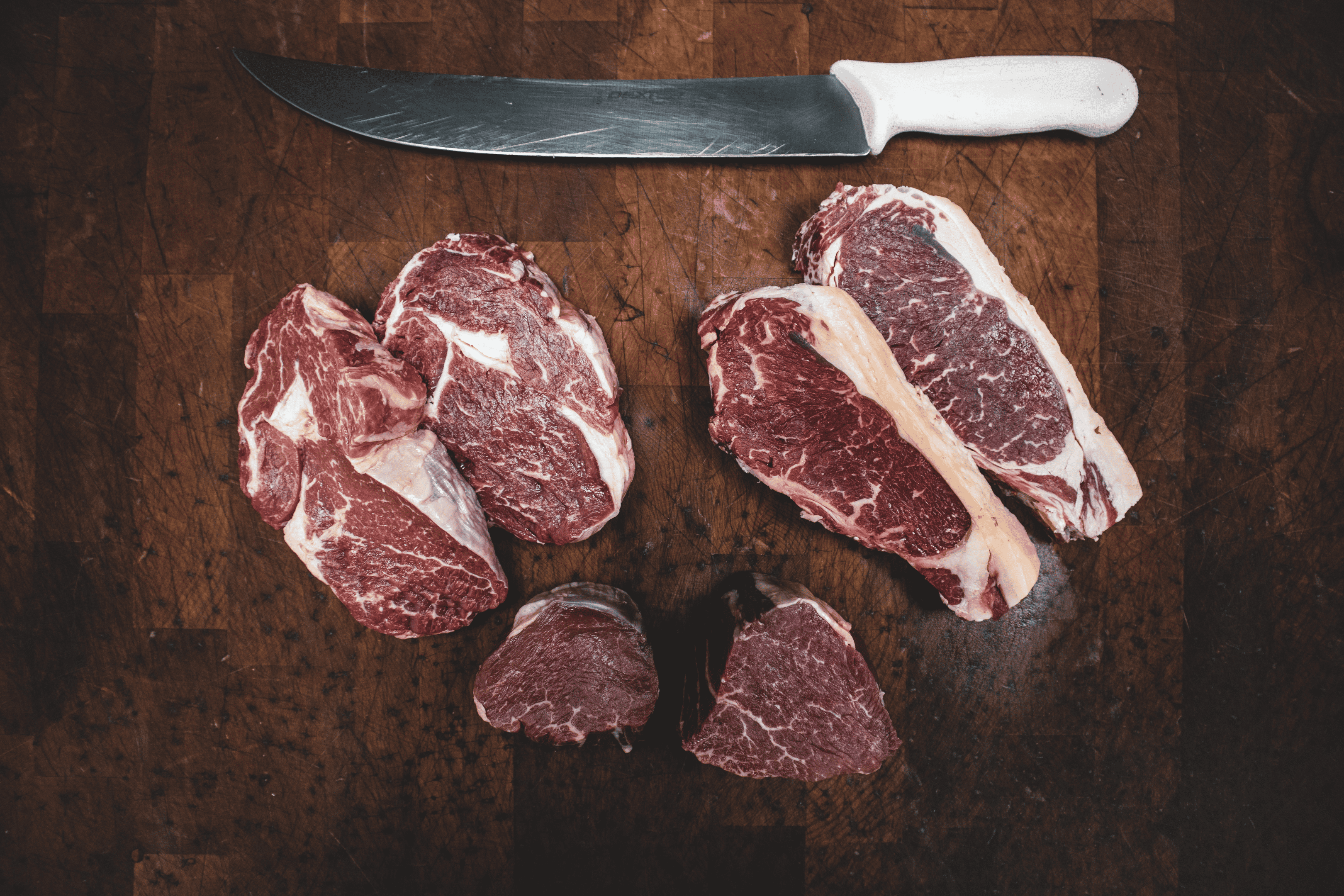Understanding the similarities and differences between the Atkins Diet and other high protein diets is important for making informed dietary choices.
KEY TAKEAWAYS
- Atkins Diet vs Whole30 diet: differ in terms of food elimination, flexibility, duration, and goals. The Whole30 diet eliminates specific food groups for a short period to reset eating habits and identify food sensitivities.
- Atkins Diet vs the keto diet: both aim to achieve ketosis through carbohydrate restriction, but they differ in fat intake, protein guidelines, and flexibility.
- The Atkins Diet vs the Paleo diet: share similarities in their focus on whole, unprocessed foods and protein consumption. However, the Paleo diet eliminates grains, legumes, and dairy.
- The Atkins Diet vs the Dukan Diet: both focus on protein consumption and carbohydrate restriction, but the Dukan Diet follows a structured four-phase approach, while the Atkins Diet offers more flexibility and a broader range of food choices.
- The Atkins Diet vs the Carnivore Diet: The Carnivore Diet primarily consists of animal-based foods, while the Atkins Diet allows for a broader range of food options and includes healthy fats.
- Low-carb diets in general, including the Atkins Diet, keto diet, and paleo diet, focus on whole foods while limiting carbohydrate intake, and offer potential benefits such as weight loss and improved metabolic health.
What is a low carb diet?
A low carb diet is a dietary approach that emphasizes reducing the intake of carbohydrates, particularly those from sources like grains, starchy vegetables, sugars, and processed foods. Instead, the focus is on consuming foods that are higher in protein, healthy fats, and non-starchy vegetables.
Low carb diets typically limit carbohydrate intake to varying degrees, with the specific carbohydrate allowance depending on the diet plan or individual goals. This reduction in carbs aims to lower blood sugar levels, regulate insulin response, and shift the body’s metabolism towards using stored fat as a source of energy.
Foods commonly included in a low carb diet are lean meats, fish, eggs, dairy products, nuts, seeds, non-starchy vegetables, and healthy fats from sources like avocados and oils. The emphasis is on whole, unprocessed foods and minimizing or avoiding foods high in refined carbohydrates and added sugars.
Difference between a low carb and a high protein diet

While a low carb diet and a high protein diet share some similarities, there are key differences between the two:
Macronutrient emphasis:
Low carb diet: A low carb diet focuses on reducing carbohydrate intake, often restricting it to a certain number of grams or a percentage of total calories. The emphasis is on limiting carbs, including sugars and starchy foods, while allowing for moderate protein and fat consumption.
High protein diet: A high protein diet, as the name suggests, emphasizes increasing protein intake. While it may also involve reducing carb intake, the primary focus is on consuming adequate protein, often in the form of lean meats, poultry, fish, eggs, dairy, legumes, and plant-based protein sources.
Purpose and goals:
Low carb diet: The primary goal of a low carb diet is to shift the body’s fuel source from carbohydrates to fats, leading to ketosis. This metabolic state promotes fat burning and may have benefits for weight loss, blood sugar control, and certain health conditions.
High protein diet: The goal of a high protein diet is to increase protein consumption to support muscle growth, repair, and overall health. It is often favored by individuals engaged in strength training, athletic performance, and muscle building.
Macronutrient ratios:
Low carb diet: A low carb diet typically involves reducing carbohydrate intake to a specific range, which can vary depending on the diet plan. It may involve consuming a moderate amount of protein and a higher proportion of healthy fats to maintain energy levels and support ketosis.
High protein diet: While a high protein diet may also involve reducing carb intake to some extent, the emphasis is on increasing protein intake. The specific protein-to-carbohydrate ratio may vary, but it generally involves consuming a higher proportion of protein relative to carbs and fats.
Food choices:
Low carb diet: A low carb diet often restricts or limits foods high in carbohydrates, such as grains, bread, pasta, sugary foods, and some fruits. It encourages the consumption of protein-rich foods, healthy fats, non-starchy vegetables, and low-carb alternatives.
High protein diet: A high protein diet focuses on including ample protein-rich foods, such as lean meats, poultry, fish, eggs, dairy products, legumes, and plant-based protein sources. It may also include moderate amounts of healthy fats and carbohydrates from sources like whole grains and fruits.
What is the Atkins diet?

The Atkins Diet was created by Dr. Robert Atkins in the 1970s. and is a popular low-carbohydrate, high-protein diet that aims to promote weight loss and improve overall health. It is founded on the principle of limiting carbohydrate intake while increasing protein consumption. The diet consists of several phases that gradually reintroduce carbohydrates while maintaining an emphasis on protein-rich foods.
During the initial phase, known as the Induction Phase, carbohydrate intake is severely restricted to induce a state of ketosis, where the body utilizes fat as its primary fuel source. This metabolic state is believed to promote weight loss by efficiently burning stored body fat. As the diet progresses through subsequent phases, carbohydrate intake gradually increases, allowing for a greater variety of food choices.
The Atkins Diet also encourages the consumption of healthy fats, such as those found in avocados, nuts, and olive oil, as they contribute to satiety and provide essential nutrients.
Atkins vs Keto diet

The ketogenic (keto) diet and the Atkins Diet are both low-carbohydrate approaches with some key similarities and differences:
Goal of achieving ketosis:
Both the keto diet and the Atkins Diet aim to achieve a state of ketosis, where the body switches from using glucose as its primary fuel source to burning fat for energy.
Carbohydrate restriction:
Both diets involve a significant reduction in carbohydrate intake. The keto diet typically limits carbohydrates to a very low range (5-10% of total calories), while the Atkins Diet starts with a more restrictive phase and gradually increases carbohydrate intake as the diet progresses.
Differences in fat intake:
The keto diet emphasizes a very high fat intake, usually around 70-75% of total calories, to support ketosis. The Atkins Diet also encourages higher fat consumption but allows for more flexibility in the amount and types of fats consumed.
Phases and flexibility:
The Atkins Diet is divided into distinct phases, with the initial phase being the most restrictive. As the diet progresses, more foods and carbohydrates are gradually reintroduced. The keto diet does not have specific phases but maintains a consistent low-carbohydrate, high-fat approach throughout.
Protein intake:
The Atkins Diet emphasizes a moderate protein intake (20-25% of total calories), while the keto diet does not have strict guidelines for protein consumption but generally encourages a moderate to high protein intake.
Food choices:
Both diets prioritize whole, unprocessed foods, but the Atkins Diet allows for a broader range of food choices, including processed low-carb options. The keto diet often focuses on specific food sources and encourages healthy fats, high-quality proteins, and low-carbohydrate vegetables.
Health benefits and outcomes:
Both diets have been associated with weight loss, improved blood sugar control, and potential benefits for certain health conditions. However, the keto diet has been more extensively studied for its therapeutic applications in epilepsy, while the Atkins Diet has a longer history and broader focus on overall health and weight management.
Individualization and guidance:
The keto diet often requires strict monitoring of macronutrient ratios and may benefit from medical supervision, especially for therapeutic purposes. The Atkins Diet offers more flexibility and can be adapted to individual needs with the guidance of a healthcare professional or registered dietitian.
Choosing the right diet: When considering the Atkins Diet versus the keto diet, it’s important to consider personal goals, preferences, and individual health needs. Consulting with a healthcare professional or registered dietitian can help determine the most suitable approach based on specific requirements and considerations.
Atkins vs the Whole30 diet

The Whole30 diet is another popular eating plan with distinct differences from the Atkins Diet:
Elimination of certain foods:
The Whole30 diet requires the elimination of grains, legumes, dairy, added sugars, and processed foods for a period of 30 days. In contrast, the Atkins Diet does not eliminate specific food groups but focuses on restricting carbohydrate intake.
Approach to carbohydrates:
While the Atkins Diet restricts carbohydrate intake, it allows for flexibility in the types of carbohydrates consumed. The Whole30 diet, on the other hand, completely eliminates specific carbohydrate sources for the duration of the program.
Focus on food quality:
The Whole30 diet places a strong emphasis on consuming whole, unprocessed foods and encourages reading labels and avoiding artificial ingredients. The Atkins Diet allows for a broader range of food choices, including processed low-carb options.
Duration and goals:
The Whole30 diet is a short-term reset aimed at identifying food sensitivities, improving overall health, and resetting eating habits. The Atkins Diet can be followed long-term as a lifestyle approach to weight management and overall health.
Food reintroduction:
After the initial 30-day period, the Whole30 diet encourages a systematic reintroduction of eliminated foods to identify potential sensitivities. The Atkins Diet, on the other hand, gradually reintroduces carbohydrates in its later phases.
Carbohydrate sources:
The Whole30 diet eliminates certain carbohydrate-rich foods, including grains and legumes, while the Atkins Diet allows for a wider range of carbohydrate sources, focusing on controlling overall carbohydrate intake.
Personalization and flexibility:
The Atkins Diet offers more flexibility in terms of food choices and can be customized to individual needs and preferences. The Whole30 diet follows a more rigid set of guidelines for the designated 30-day period.
Atkins vs the Paleo Diet

The Paleo diet is another popular eating plan that shares some similarities with the Atkins Diet while also having distinct differences:
Emphasis on whole, unprocessed foods:
Both the Atkins and Paleo diets prioritize consuming whole, unprocessed foods. However, the Paleo diet takes it a step further by excluding grains, legumes, and dairy products.
Focus on protein and fat:
Like the Atkins Diet, the Paleo diet emphasizes consuming protein and healthy fats. However, the Paleo diet also emphasizes the consumption of lean meats, fish, fruits, vegetables, nuts, and seeds.
Carbohydrate sources:
The Atkins Diet restricts carbohydrate intake, especially during its initial phases, while the Paleo diet allows for moderate carbohydrate consumption from fruits and vegetables.
Dairy and legume consumption:
The Atkins Diet allows for dairy consumption, while the Paleo diet eliminates dairy and legumes.
Specificity of food choices:
The Paleo diet has more specific guidelines, excluding grains, legumes, and dairy, while the Atkins Diet focuses on carbohydrate restriction without specific exclusions.
Goals and sustainability:
The Atkins Diet can be followed long-term as a lifestyle approach to weight management and overall health. The Paleo diet is often followed as a short-term reset or as a long-term approach for individuals seeking to adhere to a whole-foods-based eating pattern.
Atkins vs the Dukan Diet
The Atkins Diet and the Dukan Diet are both high-protein diets with some notable similarities and differences:

Photo by Rudy Issa on Unsplash
Emphasis on protein:
Both the Atkins and Dukan diets prioritize protein consumption as a key component of their eating plans. They recognize the importance of protein for muscle maintenance, satiety, and overall health.
Carbohydrate restriction:
Both diets involve reducing carbohydrate intake to varying degrees. However, the Atkins Diet is known for its initial phase of very low carbohydrate intake, which gradually increases over time. The Dukan Diet also restricts carbohydrates but does so through a structured four-phase approach.
Phases and progression:
The Atkins Diet consists of several phases, starting with a strict induction phase and gradually reintroducing carbohydrates in subsequent phases. The Dukan Diet also follows a multi-phase approach, with each phase having specific rules for food consumption and gradual reintroduction of different food groups.
Fat intake:
The Atkins Diet acknowledges the importance of healthy fats in the diet and allows for moderate to high fat consumption. The Dukan Diet, on the other hand, focuses more on lean protein sources and limits fat intake.
Food choices:
The Atkins Diet offers a broader range of food choices, including processed low-carb options, within its framework of carbohydrate restriction. The Dukan Diet emphasizes lean proteins and restricts certain foods, such as fatty meats and processed products.
Long-term sustainability:
The Atkins Diet can be followed as a long-term lifestyle approach to weight management and overall health. It offers more flexibility and allows for individual customization. The Dukan Diet, on the other hand, is often followed for shorter periods with specific phases and may be more restrictive in its approach.
Support and guidance:
Both diets recommend seeking professional guidance when starting the program, particularly for individuals with underlying health conditions or specific dietary needs. Consulting with a healthcare professional or registered dietitian is recommended to ensure proper implementation and adherence to the diet.
Atkins vs the Carnivore Diet
Also read: Carnivore Diet, What is it?
The Atkins Diet and the Carnivore Diet are both high-protein diets that focus on animal-based foods. Here are some key similarities and differences between the two:

Emphasis on animal protein:
Both the Atkins and Carnivore diets prioritize the consumption of animal protein as a primary source of nutrition. They recognize the importance of protein for muscle maintenance, satiety, and overall health.
Carbohydrate restriction:
Both diets involve reducing carbohydrate intake. The Atkins Diet follows a gradual reduction in carbohydrate intake, while the Carnivore Diet restricts carbohydrates to almost zero by primarily consuming animal products.
Approach to fat intake:
The Atkins Diet encourages the consumption of healthy fats as part of a balanced macronutrient profile. In contrast, the Carnivore Diet places less emphasis on fat intake and focuses primarily on animal protein sources.
Variety of food choices:
The Atkins Diet offers a broader range of food choices, including vegetables, healthy fats, and low-carb alternatives. The Carnivore Diet, as the name suggests, primarily consists of animal-based foods and eliminates plant-based foods.
Fiber and nutrient considerations:
The Atkins Diet emphasizes the importance of fiber and nutrients from various food sources, including vegetables and low-carb alternatives. The Carnivore Diet does not include fiber-rich plant-based foods, which may require additional attention to ensure adequate nutrient intake.
Long-term sustainability:
The Atkins Diet can be followed as a long-term lifestyle approach, allowing for more flexibility and individual customization. The Carnivore Diet, on the other hand, is often considered more restrictive and may be challenging to sustain over the long term.
Consultation and guidance:
Given the specific nature of the Carnivore Diet and potential nutritional considerations, seeking professional guidance from a healthcare professional or registered dietitian is highly recommended. They can provide personalized advice and ensure nutritional adequacy.
Potential benefits of the Atkins ad other high protein diets

Weight loss: These diets are widely recognized for its potential to facilitate weight loss. By reducing carbohydrate intake, the body is forced to burn stored fat for energy, leading to a reduction in body weight. The diet’s emphasis on protein-rich foods also contributes to increased satiety, potentially reducing calorie intake and promoting sustainable weight loss over time.
Improved blood sugar control: They may be beneficial for individuals with prediabetes or type 2 diabetes. By minimizing carbohydrate intake, the diet helps regulate blood sugar levels, preventing spikes and crashes commonly associated with high-carbohydrate meals. This can support better blood sugar control and potentially reduce the need for medication in some cases.
Other Health Markers: The low-carbohydrate nature of these diets can also positively impact other health markers, including triglyceride levels, cholesterol profiles, and blood pressure. Research suggests that the diet may help improve cardiovascular health and metabolic syndrome parameters.
Difference between a low carb and high protein diet
While a low carb diet and a high protein diet share some similarities, there are key differences between the two:
Macronutrient emphasis:
Low carb diet: A low carb diet focuses on reducing carbohydrate intake, often restricting it to a certain number of grams or a percentage of total calories. The emphasis is on limiting carbs, including sugars and starchy foods, while allowing for moderate protein and fat consumption.
High protein diet: A high protein diet, as the name suggests, emphasizes increasing protein intake. While it may also involve reducing carb intake, the primary focus is on consuming adequate protein, often in the form of lean meats, poultry, fish, eggs, dairy, legumes, and plant-based protein sources.
Purpose and goals:
Low carb diet: The primary goal of a low carb diet is to shift the body’s fuel source from carbohydrates to fats, leading to ketosis. This metabolic state promotes fat burning and may have benefits for weight loss, blood sugar control, and certain health conditions.
High protein diet: The goal of a high protein diet is to increase protein consumption to support muscle growth, repair, and overall health. It is often favored by individuals engaged in strength training, athletic performance, and muscle building.
Macronutrient ratios:
Low carb diet: A low carb diet typically involves reducing carbohydrate intake to a specific range, which can vary depending on the diet plan. It may involve consuming a moderate amount of protein and a higher proportion of healthy fats to maintain energy levels and support ketosis.
High protein diet: While a high protein diet may also involve reducing carb intake to some extent, the emphasis is on increasing protein intake. The specific protein-to-carbohydrate ratio may vary, but it generally involves consuming a higher proportion of protein relative to carbs and fats.
Food choices:
Low carb diet: A low carb diet often restricts or limits foods high in carbohydrates, such as grains, bread, pasta, sugary foods, and some fruits. It encourages the consumption of protein-rich foods, healthy fats, non-starchy vegetables, and low-carb alternatives.
High protein diet: A high protein diet focuses on including ample protein-rich foods, such as lean meats, poultry, fish, eggs, dairy products, legumes, and plant-based protein sources. It may also include moderate amounts of healthy fats and carbohydrates from sources like whole grains and fruits.
Conclusion:
Understanding the differences and similarities between the Atkins Diet and other high protein diets is essential for individuals to make informed choices about their dietary approach. Each diet has its own unique features, such as food elimination, flexibility, duration, and goals.
Overall, low-carb diets, including the Atkins Diet, prioritize whole foods, limit carbohydrate intake, and offer potential benefits such as weight loss and improved metabolic health.
Choosing the right diet depends on individual preferences, health goals, and dietary needs, and consulting with a healthcare professional or registered dietitian is recommended for personalized guidance.

